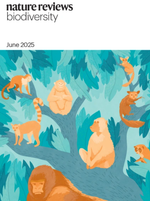Nature
Mohammad S. Farhadinia, Aishwarya Maheshwari, Muhammad Ali Nawaz, Hüseyin Ambarlı, Mariya Alexeevna Gritsina, Maxim A. Koshkin, Tatjana Rosen, Amy Hinsley & David W. Macdonald
View Journal Article / Working PaperSoutheast Asia is a major hub of illegal wildlife trade, with supplies arriving from many parts of the world. Most west and central Asian countries have hitherto been less engaged in this supply chain1, possibly because of remote locations, less-developed transportation networks and easier availability of other sources of supply, but China’s Belt and Road Initiative (BRI) has the potential to dramatically change that situation. The planned BRI and its southern tributary, the China–Pakistan Economic Corridor, traverse key habitats for large carnivores, which are highly marketable species in China and Southeast Asia. By creating new access to wildlife and supply corridors, the BRI poses a significant risk of increasing illegal wildlife trade in the region.




